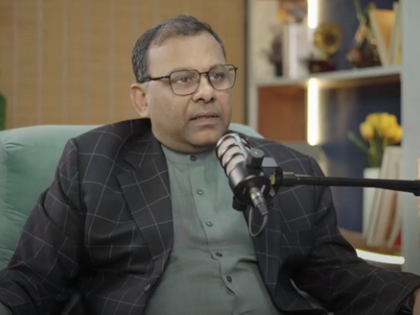Vineet Gupta Ashoka Founder Weighs in: 40 Crore Young Indians, But Not Enough Colleges?
By Impact Desk | Updated: April 18, 2025 16:11 IST2025-04-18T16:05:30+5:302025-04-18T16:11:18+5:30
India’s burgeoning youth population, with over 436 million individuals under the age of 18, presents both an immense opportunity ...

Vineet Gupta Ashoka Founder Weighs in: 40 Crore Young Indians, But Not Enough Colleges?
India’s burgeoning youth population, with over 436 million individuals under the age of 18, presents both an immense opportunity and a critical challenge for the nation’s higher education system. “India is at a crossroads. We have the largest youth population in the world, but if we do not provide them with quality higher education, our demographic dividend could turn into a crisis,” says Vineet Gupta, Founder of Ashoka University. As these young individuals approach the age for tertiary education, the demand for college seats is set to surge dramatically. However, the current infrastructure may not be equipped to accommodate this influx, necessitating strategic expansion and enhancement of educational institutions.
Demographic Dividend
The youthful demographic of India offers a major advantage, often referred to as the ‘demographic dividend.’ This term signifies the economic growth potential that can result from shifts in a population’s age structure, particularly when the working-age population is larger than the non-working-age. However, realizing this advantage requires a robust higher education system.
“We need to shift our mindset from merely expanding the number of institutions to ensuring quality education that meets global standards and the needs of our economy. We must invest in faculty, research, and infrastructure to prepare students for the future that can shape India’s growth story,” Gupta emphasizes.
Current Higher Education Landscape
Over the past decade, India’s higher education sector has witnessed significant growth. The number of universities has nearly doubled, increasing from 600 in 2012 to approximately 1,150 today. Despite this expansion, the Gross Enrolment Ratio (GER)—which measures the percentage of individuals aged 18-23 enrolled in higher education—remains around 28%. This figure indicates substantial room for improvement, especially when compared to developed nations where the GER often exceeds 50%.
Projected Demand and Infrastructure Needs
Analyzing projections for higher education demand over the next decade reveals a pressing need for infrastructure development. Factors such as population growth and increasing aspirations for tertiary education contribute to this rising demand. According to NITI Aayog CEO BVR Subrahmanyam, to achieve a 50% GER, India would need to double its number of universities to 2,500. This ambitious target underscores the necessity for a concerted effort to expand educational infrastructure.
Challenges in Expansion
While the goal of expanding higher education is commendable, it is fraught with challenges. Funding constraints pose a significant obstacle, as establishing new institutions and upgrading existing ones require substantial financial investment. Additionally, there is a notable shortage of qualified faculty, which can impede the delivery of quality education. The rapid expansion also carries the risk of compromising educational standards, a pitfall observed in other developing countries that have pursued swift educational growth.
“We need to ensure that expansion does not come at the cost of quality. A balance between access and excellence is crucial if we are to build institutions that can fulfil the aspirations of our young population” warns Vineet Gupta Ashoka University Founder.
Strategies for Sustainable Growth
To address these challenges, a multifaceted approach is essential. Public-private partnerships can mobilize resources and expertise from both sectors, facilitating the establishment of new institutions and the enhancement of existing ones. Leveraging technology through online education platforms can also play a pivotal role in increasing access to quality education, especially in remote areas. Encouraging foreign universities to establish campuses in India is another strategy that can augment the capacity and quality of higher education. Recent developments, such as global universities from developed nations like the United Kingdom or the United States planning to open campuses in India, exemplify this approach while eyeing India’s booming higher education market of 40 million students. The University of Southampton leads the charge, launching the first-of-its-kind campus in Gurgaon, near Delhi, and enrolling students.
Policy Recommendations
Effective policy interventions are crucial to facilitate the expansion of higher education. Regulatory reforms that ease the establishment of new institutions and ensure quality assurance are imperative. Providing incentives for private investment can attract the necessary capital for infrastructure development. Initiatives aimed at improving faculty recruitment and training are also essential to maintain and enhance educational standards.
Vineet Gupta concludes, “India’s future will be shaped by how well we educate our youth today. Policymakers, educators, and industry leaders must collaborate to create a higher education system that is inclusive, innovative, and globally competitive.”
While India’s youthful population presents a unique opportunity for economic and social advancement, realizing this potential hinge on the ability of the nation to expand and enhance its higher education system. Through strategic planning, investment, and innovative approaches, India can transform its demographic advantage into a driving force for sustainable development.
Open in app